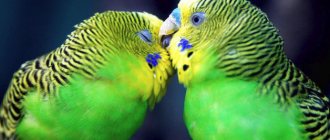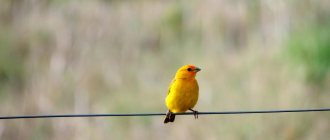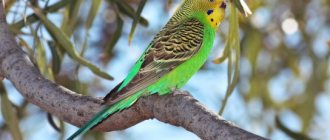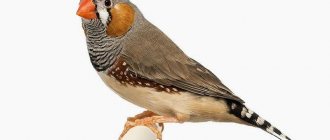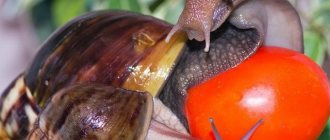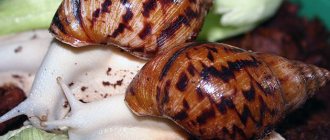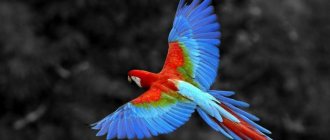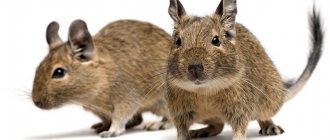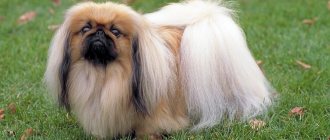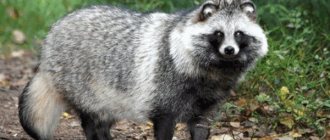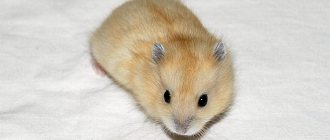Description of the species
Budgerigars, upon reaching adulthood, have the following physical indicators:
- body length - 17–20 cm;
- body weight - 40–45 g;
- tail length - up to 10 cm;
The bulk of budgies have feathers that are green or a combination of green and yellow.
The color of feathers is white, acid yellow or blue; this color is characteristic of breeds bred as a result of directed selection. Birds of this breed have wavy dark stripes in the back of the head, on the wings and back. The stripes are often located, on the head they are thin, gradually descending towards the wings, the lines thicken, become clearer and brighter. Because of these lines, parrots are called budgies. Before the first molt, young birds have a much shorter tail than adult parrots (6–8 cm).
The wings of budgerigars reach 9–10 cm, they are strong, with a well-developed flight feather. Wavy birds only use their wings to fly; they do not use them for climbing or sit on them. The neck has good mobility - in order to look back, birds only use a turn of the head. The paws have four toes, two of which look forward and two are turned in the opposite direction. The skin on the paws is gray-blue, dark.
The eye color of these birds is dark blue, sometimes the iris is yellow or white. The parrot's eye is designed in such a way that it has a wide angle of vision.
Did you know? A parrot's vision is designed so that the bird sees everything in color. This remarkable property is not given to everyone in the animal world - for example, dogs see their surroundings only in a very limited range of shades.
Lifespan
Before giving your child a feathered friend, you need to find out how long budgerigars live at home. If a bird lives very little, then its death will be a serious psychological trauma for the child.
Parrots can live in your home from 5 to 15 years. The difficulty in determining the age of a bird is that both young and old (fifteen-year-old) parrots look the same. If you purchase an adult bird, you cannot be sure of its age. The lifespan of birds depends on living conditions and diet.
A bird will live long if:
- the menu will regularly include fruits, vegetables and herbs;
- the birdcage will be spacious and comfortable;
- the parrot will fly freely around the apartment at least once a day.
The color of the strong and downwardly curved beak in young parrots is dark, while in adult birds the color of the cornea changes to a bright yellow color.
Learn also about cockatiels, Jacos, and necklace parrots.
Where to buy a budgie?
It is best to buy budgies in specialized pet stores. They sell healthy birds that have passed all the necessary examinations and received vaccinations. In these places they will be able to offer you a purebred bird without any problems in the pedigree. In addition, it will come with a convenient and suitable cage.
If you want to get a budgie at home, then you can take it from your hands. Usually birds are sold inexpensively through advertisements, but they can sometimes have health problems. They are also sold in nurseries, at the poultry market and by the breeders themselves.
We recommend reading: Charming budgerigar Czech
But in any case, before purchasing a budgie, you should first study all its important features and maintenance rules. Despite the fact that it is considered an unpretentious bird, it is still important to provide convenience and comfort for your feathered pet when living at home. It is necessary to think through everything - choose a suitable cage, arrange it, install drinking bowls, feeders and other important attributes. Do not forget about communication and care for the parrot; this is what is considered an important basis for its full-fledged life.
How to distinguish between a female and a male
In budgerigars, you can distinguish males from females by the color of the wax (growth at the base of the beak).
What does the color of the cere mean?
- light purple is a young male;
- bright blue - adult male;
- light blue - young female;
- light brown or dark brown - sexually mature female.
The feathers on the female's forehead have a fluorescent property and glow under the influence of ultraviolet radiation. Ornithologists are convinced that the unusual spot is provided by nature to attract males of this breed to the female.
Did you know? Budgerigars have an unusually fast visual processing speed, being able to see up to 150 images in one second. For comparison, a person manages to see only 16 images in the same time.
Nutrition
If you properly care for a budgie (boy or girl) after purchasing it (purchased at a pet store or from your own hands), it can live up to approximately 15 years. Balanced feeding (or the necessary diet) is an important component of proper keeping and care of parrots. These birds have a high body temperature (about 41 degrees) and, accordingly, have a fast metabolism. In this regard, the pet must eat the right way in order to promptly replenish its body with all the necessary nutrients.
Conditions of detention
Budgerigars come from Australia, where the climate is arid and hot, with rare heavy rainfall. Proper care of these birds involves keeping them in suitable climatic conditions so that the parrots feel comfortable at different periods of their lives (during the period when the birds molt, adapt or reproduce).
To ensure proper conditions of detention, it is important to observe:
- light mode;
- temperature regime;
- permissible air humidity in the room where the cage is located.
Light mode for parrots
This mode implies not only the change of day and night so that the birds are awake and asleep in time, but also the brightness of the light in the room. Lighting is so important for birds because vision is one of their most important organs of perception of the environment. With the help of vision, birds navigate in space and choose the most suitable food.
Lack of light causes depression in parrots, and anomalies in behavioral reactions occur (birds begin to peck feathers on themselves and other birds). Insufficient lighting causes disruptions in health - the body lacks vitamin D, and, as a result, female parrots fill the nest with unfertilized eggs, and male parrots lose interest in the opposite sex.
The light regime is very important for parrots because its disruption negatively affects the endocrine glands, which are located in the eye area.
For parrots, the night period (the period of rest and sleep) is very important. If birds do not have enough rest period, their immunity decreases, irritability increases, long-term stress occurs - the birds get sick.
Therefore, ornithologists recommend that “night owl” owners who like to watch TV for a longer period of time cover the cage with their pet with a dark cloth so that light and sound do not disturb its sleep.
The length of daylight for parrots should be:
- in summer and spring - from 12 to 14 hours;
- in autumn and winter - from 10 to 12 hours.
Light intensity
Ultraviolet light helps the body produce vitamin D, which promotes the hardness and elasticity of bone tissue. This is why lighting brightness is very important.
In summer, parrots benefit from sunbathing. To do this, choose the morning, not hot hours. The birdcage is exposed to the sun for some time, the time of the first five procedures is no more than 5 minutes. After the pet has adapted to the sun, the time for “tanning” is gradually increased to 30 minutes.
In winter, the same procedures can be carried out under a special ultraviolet lamp; it can be easily purchased in “Everything for Animals” stores.
Daylight hours should not be too long or too short, as deviation in either direction can lead to a deterioration in the health of the bird.
When planning to get a pet, you should pay special attention to the nature and characteristics of care, study the preferences of mini-pigs, Achatina, newts, leopard geckos, hamsters, capybaras, rabbits, mongooses, salamanders, chameleons, chipmunks, squirrels, guinea pigs, snakes.
Abnormally long daylight hours lead to:
- lack of sleep;
- nervous condition;
- reducing the threshold of stress resistance;
- general loss of strength;
- the awakening instinct of reproduction at the wrong time.
Abnormally long night time leads to:
- exhaustion of the bird (it does not have time to eat);
- constantly being drowsy and depressed;
- the beginning of hormonal imbalances.
Air humidity
Indoor air humidity should be as close as possible to the natural habitats of wavy birds. It doesn't rain often in Australia, but the air humidity constantly fluctuates around 55–70%.
What threatens excessively dry indoor air for a parrot:
- skin diseases;
- loss and brittleness of feathers;
- prolonged period of molting;
- depressed state;
- to the fact that the mucous membrane of the eyes, nose and mouth suffers;
- to decreased immunity;
- to an increased likelihood of respiratory and viral diseases.
In order to avoid these unpleasant consequences, there should always be a bath of water in the cage for bathing.
Budgerigars enjoy splashing around in the water. Room temperature
Wavy plants do not do well at room temperatures that are too high. The optimal room temperature for keeping them is considered to be +22–25 °C. The bird should be protected from sudden fluctuations in air temperature and drafts.
Parrots do not have sweat glands, so when they overheat, they raise their wings, open their beaks and stretch their necks - this helps them lower their body temperature to an acceptable level.
How to determine heatstroke in a parrot:
- the bird is breathing heavily;
- trembling throughout the body;
- unsteadiness on your feet;
- disorientation in space;
- loss of consciousness.
How to warm a bird
If your pet is sick and its body temperature has dropped significantly, it is important to warm the bird. Regular light bulbs (40–60 W) or special ornithological heating lamps are perfect for this.
In winter, there are interruptions in heating, and to raise the air temperature, you can install a heater in the room. When installing a heater, it is important to remember that it should not be placed near the cage.
Did you know? In Australian nature, you can observe huge flocks of budgerigars numbering over a thousand birds. When a flock sits on a tree, from afar it seems that thousands of bright exotic flowers are blooming on it at the same time. Although the noise is deafening.
Principle 6: Communication is vital
This is an extremely important point. Parrots are social creatures. Communication is vital for them. Having snatched the bird from nature and brought it home, we actually became members of its flock. No matter how many toys a parrot has, it will never replace full communication between a person and a bird. Especially if you want the parrot to be not just a decorative beauty behind bars, but to become your friend and companion.
To ensure good care for your parrot, communicate with your pet, talk to it, play, teach tricks. Remember that any training or taming of a bird must be done under the sign of mutual desire. If you are in a bad mood, put off working with the bird until next time. Similarly with a bird, if your feathered pet is not in the mood, do not force him to study under any circumstances, it is better to just talk to the bird, leaving the lesson for another day.
So, we have looked at the principles of how to care for a pet parrot. Now it’s up to you – provide decent maintenance for your pet!
How to choose a home for a parrot
If a family has decided that a feathered pet is needed in the house, they need to think about where and how it will live. To make the parrot comfortable and cozy, he needs his own house - a cage. There is an opinion that the absence of a cage causes the death of parrots even before they reach the age of three. When choosing a cage, you need to take into account several factors: size, shape, height, density of the lattice, installation of devices necessary for the life of the bird.
Dimensions and shape
Budgerigars can be kept in cages of various shapes and sizes. The most convenient form is considered to be a spacious rectangular cage with a domed top. The bottom of the cage is made of hard wood or metal, and the walls and dome should be barred with thin, strong wire. The wire for the grill should not be copper, as the pet can be poisoned by copper oxides by chewing the wire.
If the cage tray is made of soft wood, then the bird will constantly peck holes in it, and soon you will have to buy a new cage. In order for the bird to have something to chew on, the cage must be equipped with cuttings of branches with thick knots.
For one parrot, the size of the cage should not be less than 35×35 cm, and for a married couple, the extremely small living area is 65×55 cm. The height of the bird’s house is not as important as its length and width, because parrots do not fly in it, only climb on perches and ladders.
The frequency of the wire placement should create a grid of such density that the bird cannot stick its head in there and get injured. The diameter of the wire should not be thicker than 2 mm, and the distance between two wires should not exceed 15–20 mm. If the wire is denser, it will make it difficult for the bird to see the room, it will take longer to get used to its owners and will be less contactable.
The cage size can be any, but the most acceptable size is one where the parrot can calmly spread its wings. Parrots often perform such actions, compensating for the lack of active movement.
You also need to plan for visits to the veterinarian. To do this, buy a small carrying cage. This cage has small dimensions (20x7x9 cm) and three walls that are impenetrable to view; there is a lattice wall only in front of the carrier. The opacity of the carrier cage is due to the fact that the bird experiences stress when moving outside or when seeing unfamiliar people.
Arrangement of the cage
After purchasing the cage, you need to equip it for the bird’s convenience. There are several perches in it. Such perches are located in places where a sitting parrot does not clog the water bowl or food bowl with droppings; the bird's tail should not reach the walls of the cage.
The following tree species are suitable for perches:
- oak, beech, maple, birch - these will be durable and strong seat supports;
- willow - these will be healing perches;
- apple, pear, cherry, plum, rowan - these will be “delicious” seats containing minerals and vitamins.
Important! Coniferous trees (spruce, pine, cedar) are absolutely not suitable for perches - they can give rise to the development of diseases in birds. It is also unacceptable to use poisonous tree species.
When installing such wooden branches, the bark is preserved on them. They must be subjected to heat treatment (dipped in boiling water, put in a hot oven for a while) in order to kill the parasites living in the bark and under the bark.
A free-hanging swing or a swinging ladder that is not secured at the bottom is also installed in the cage. These devices will help parrots develop the muscles of their legs. You can place medium-sized (or large) stones and bird toys around the cage.
Drinkers and feeders are installed in the cage. There may be one or two drinking containers; the water in them must be changed every day.
Typically you need three feeders:
- for mineral feeding (crushed eggshells, red clay, sand, charcoal);
- for solid feed (millet and other grains);
- for soft food.
Birds love to swim, especially in the hot season, and use drinking bowls for this.
During bathing, water splashes, the cage becomes dirty, fluff and feathers fly in all directions. This can be avoided by purchasing a special bathing container. This “bathroom” has transparent walls that protect the cage from splashes. It can be hung from the ceiling of the cage. To ensure that the cage is always clean and the owner can quickly and conveniently clean it, the bottom of the cage is made retractable. This bottom is easy to pull out, shake out of debris or wash. At a height of 1.5 to 3 cm from the bottom, a fine mesh net is fixed in the cage. Such a net is needed to prevent birds from pecking at dirty food (that has fallen to the bottom of the cage and mixed with droppings).
Did you know? Your parrot may be left-handed. Take a close look at him - a left-handed person will take the treat with his left paw, and a right-handed person with his right.
Parrot house
You need to buy a spacious cage so that there is enough space for all the necessary accessories and for games. Dimensions should not be less than 60x80 cm.
Budgerigars' homes are regularly cleaned. Therefore, a person’s hand should easily fit through the door. It's good if there is a removable bottom panel.
In the cage it is necessary to place everything necessary for the bird: a feeder, a drinking bowl, a bath. Proper bird care means careful selection of the necessary accessories.
Additional accessories
It is also important to take care of perches and toys for your budgies. Choose wooden perches that are suitable in size for the bird. Thin or wide perches cause deformation of the paws and provoke corns.
It is necessary to equip the cage with a mirror, a ladder, a rope, and hanging rings. This way, budgies will combine self-care with games. Also, a special stone must be attached to the cage bars to grind down the beak.
Cleaning
The cage will have to be cleaned 2 times a week. Use a damp cloth and soapy water to wash the fence and the inside of the bird house. It is better to use baking soda and warm water for cleaning. This way you can avoid poisoning your parrot with household chemicals. Clean the pan especially thoroughly, and after drying it, add a small layer of special sand, which is sold in pet stores.
Caring for a budgie
Budgerigars are very curious birds and need to stick their beaks everywhere. When they are let out to fly around the apartment, they are interested in everything, they try everything to their teeth. Owners need to provide for this bird feature and ensure their pets’ safety in everything: proper nutrition, the interior of the bird’s house, and the conditions when walking around the apartment.
Feeding
It is very important for future owners to become familiar with what budgies eat at home, because ignorance of such an important issue can undermine the health of their pets.
Most of the budgerigar's diet consists of millet of various colors (yellow, red and white). They also do not refuse oats, sunflower seeds, canary grass and wild grass seeds. Every other day, the bird's menu should include a soft mixture: grated carrots, finely chopped chicken eggs and nettles grated into dry dust.
If the parrot has hatched offspring, then the soft mixture should be given every day. You can change the components of this mixture and replace carrots with red beets, and eggs with homemade cheese. After lunch with grated beets, parrots can be smeared from head to toe in the coloring juice and frighten their owners for a couple of days with the eerie appearance of their feathers.
In winter, sprouted grain feed (a source of minerals and vitamins) is beneficial for the birds’ bodies, and in summer birds are given greens (lettuce leaves, dandelion leaves, parsley and dill leaves) daily. It is necessary to ensure that the greens are not treated with insecticides so that the parrots do not get poisoned. Also, in winter and summer, branches of fruit trees should be present in the cage; willow branches are very useful.
From time to time you can treat your pet to a peeled piece of apple; it is undesirable to give soft fruits (bananas), which can clog the bird's crop, and pieces of white bread dried in the oven until crisp.
What you should absolutely not give to parrots:
- Rye bread;
- salt or salty foods.
Important! When kept in cages, birds should not be overfed, since their movement is limited by the space of the cage or apartment.
Parrots can become obese. Drinking
Water in drinking bowls is changed every day to avoid stagnation. In winter, you can add a little lemon juice to drinking water; for every 150 g of water, add 15 drops of juice. Lemon juice serves as a source of vitamin C and at the same time disinfects water.
When parrots go through particularly difficult periods in their lives (they are feeding chicks, molting, or have recently been ill), vitamins or fish oil are added to their drink or food.
Care
When a new tenant arrives in the house, the owners need to anticipate all dangerous situations for him and prevent them. Caring for budgies is not difficult, but it is worth remembering what is contraindicated for your pet.
Dangers at home:
- open windows and doorways - a bird may fly out of the apartment and never find its way back;
- mirror surfaces made of glass - in flight, a parrot can hit them hard and get injured;
- electrical wiring - parrots love to chew everything, if a mischief maker damages the insulation of an electrical cable, the bird may receive an electric shock;
- poisonous houseplants - lily, narcissus, amaryllis, dieffenbachia, foxglove, monstera, rhubarb, English ivy, croton are deadly for birds. Conditionally edible for parrots: violet, aloe, ferns, edible fig, gardenia, grape ivy. Your pet can chew these flowers and survive, but this is best avoided;
- cords from blinds and string curtains - the bird can become entangled and die;
- a smoldering cigarette or cigarette butts in an ashtray - the parrot can get burned or eat tobacco and get poisoned;
- open freezers, washing machines, ventilation grilles - a bird’s curiosity can lead to injury or death;
- water in the bathroom, an aquarium without a lid, a bucket of water - a parrot can drown in them;
- unhindered access to the trash can - having decided to take a closer look at what is interesting there, the bird can be taken out and thrown away along with the trash bag;
- household chemicals, markers, felt-tip pens, insecticides - getting into the gastrointestinal tract or respiratory system can result tragically;
- dogs and cats - the cat’s feigned indifference to its feathered neighbor should not weaken your alertness;
- inattention of the owners - an affectionate bird can nestle next to its sleeping owner, turning over to the other side a person can crush the fragile pet;
- newspapers - newsprint used as bedding in a cage tray can become a source of lead poisoning;
- New Year's garlands and toys - the parrot's attention is simply drawn to itself by the festive tinsel and sparkles, which the bird can die from eating, and the parrot also definitely needs to try electric garlands, which threatens with an electric shock.
When going on a short vacation (five to seven days), it is better to leave your pet at home and not give it away for foster care. A familiar environment, a sufficient amount of food and drink, a home cage, toys, swings and mirrors will help brighten up the bird’s sadness for its absent owners. By moving a cage with a parrot to relatives or friends, you cause the parrot much more trauma than with your short absence.
Did you know? With the body motionless in rotation, the parrot's neck moves remarkably, and the bird can turn its head almost 180 degrees.
In addition to ensuring safety, caring for budgies at home includes:
- daily cage cleaning;
- daily replacement of drinking water and feed;
- washing food and drinking containers with hot water;
- feeding varied and fresh food that is beneficial for poultry;
- careful attention to the health of birds;
- walks around the apartment, ideally daily;
- ensuring a “day and night” regime, for which the cage is covered with a dark, light-proof fabric while the bird sleeps.
It is normal for budgies to defecate 35 to 50 times per day. The health status of a budgie can be determined by its droppings:
- white “blamba” with a green edging, odorless - the bird is healthy;
- dark green or brown droppings (the presence of seeds and grains in the diet) - this also indicates that the bird is healthy;
- droppings that are too light, droppings with blood, or a smell coming from the droppings are the first signal that something is not right with the bird’s health.
If, in addition to “improper” bowel movements, the bird’s physical condition is also far from being in the best shape, it is vomiting, trembling all over its body, the bird sits hunched up and refuses to eat - you need to immediately contact a veterinarian!
Education
It is easier to start teaching a small parrot, but it is quite possible to teach the pronunciation of some words to adult birds. Both females and males are trained, but wavy birds in pairs refuse training. If a bird learned to talk before it found its soul mate, it will continue to talk and can teach its mate to do so.
Before starting training sessions, the owner must find an approach to his pet, gain his trust and love. The parrot itself must want to communicate; for this, the person needs to spend as much time as possible with him.
You can start talking to your parrot as soon as it stops being afraid of a person approaching the cage. Conversation with gentle intonations is the main element of taming a bird.
You need to address your pet by name; usually birds remember their name first. It’s good if the name has a rolling “r”, such a word is easily remembered and pronounced by parrots, but birds also readily pronounce other melodious names.
Possible names for parrots:
- Gerochka;
- Kesha;
- Kuzya;
- Gosha;
- lemon;
- Arseny;
- Kira.
Diseases and prevention
The health of budgies should come first. When keeping them at home, they can sometimes develop serious illnesses that can lead to the death of the pet. To help your bird, you should know the types of diseases and how to treat them.
- Scabies mite With this disease, holes appear in the area of the cere. The bird arrives in a nervous state, constantly itching with its beak and paws. To eliminate this disease, the bird must be regularly treated with a special product that can be purchased at a veterinary pharmacy or pet store.
- Helminths Parrots can develop worms that parasitize the intestinal area. The main symptoms are lethargy, deterioration of plumage, weight loss. Parasites often come with low-quality food. To ensure that your budgie is not infected with helminths, it is important to take proper care; you need to use only fresh and high-quality food for feeding. If you become infected with helminths, you should contact your veterinarian.
- Colds occur in birds due to their exposure to drafts and hypothermia. During a cold, a parrot sneezes, coughs, and has a runny nose. Treatment is performed using warming.
- Gastrointestinal disorders They appear when feeding low-quality food. During these illnesses, the bird becomes lethargic, apathetic, and has loose and frequent stools. To improve the condition, the feathered pet should be given easily digestible food and B vitamins.
Features of reproduction
If budgerigars have a pair, they readily breed in cages. At home, they mature for sexual relations by four months, but the most successful reproductive age for males and females occurs after a year of life.
Parrots meticulously choose their mates and do not always agree with the owner’s choice. It is not uncommon for a female to refuse to allow a parrot bought by her owner to approach her. The bird has to be carried back.
In order to avoid such a situation, it is best to give the bird a choice of several partners that it likes - and leave that one. They remain faithful to this choice forever. When the owners notice that the parrot begins to care for the female (cleaning her feathers, carrying pieces of tasty food and feeding her from her beak), they can prepare for the appearance of offspring in the bird family.
In order for the birds to want to have offspring, they need to install a special house in the cage for hatching the chicks. If there are several bird pairs in one cage, then there should be one house for each of them. If this condition is not met, the females will fight among themselves for “living space.”
Wavys reproduce most readily in spring and summer, but you can get offspring from them in winter. There are usually six to ten eggs in a clutch; the bird lays eggs every day or every other day. When all the eggs have been laid, the mother sits down to hatch them. After 18 days, a new inhabitant appears in the cage, his brothers and sisters begin to hatch a day after him. The last chick emerges from the egg that was laid last.
Did you know? Swans are not the only ones famous for their loyalty. It’s not for nothing that budgies are popularly called “lovebirds” - they mate for life. If one of the pair dies, the other parrot will remain alone for the rest of its life.
Breeding
One budgie is still bored, even if people constantly play with him. And if you are rarely at home, then your pet definitely needs a friend. Some owners don't get a second budgie because they don't want to deal with the chicks. But you can have two same-sex birds! If you deliberately get a pair of wavy birds to breed chicks, pay attention to the bird’s wax. This is a small growth above the beak. To put it simply, “nose.” If the wax is brown, this is a female, and if it is blue or light blue, this is a male.
Budgerigars are monogamous. But breeders recommend immediately buying two birds raised in the same flock, so that they definitely do not abandon each other. Although domestic wavy birds rarely behave obstinately towards a new friend or girlfriend, so the risks of being left without bird offspring are small.
Nest house
In captivity, budgerigars reproduce quite actively. But in addition to warmth, light, food and water, one more condition is needed - a house. The female will not allow the male to approach her until she has built a nest in a place hidden from prying eyes. Nesting houses for wavy birds are sold in pet stores and resemble birdhouses: a wooden or plastic box with a hole.
The dimensions of the house must be at least 30*30*30. If it is less spacious, the female may destroy some of the offspring so that the rest of the chicks are comfortable. The bottom of the house is covered with sawdust or hay. You can add medicinal chamomile flowers, which will serve as a preventative against infecting the female and chicks with parasites.
Eggs and chicks
A female budgerigar can lay up to 6 eggs. All this time she will sit in the house and come out only occasionally - to feed. Although some particularly caring males fly into the house and feed the hen. You cannot get the eggs out, otherwise the female may refuse to hatch. You need to check the offspring through the removed top cover of the house. If the eggs sit for more than 3 weeks, they are empty.
A small bird cannot always cope with warming a large number of eggs, so it is necessary to maintain an optimal temperature. If the room is cool, you need to warm the house from outside with a lamp. And no drafts.
A nursing female and grown chicks should be fed with water-based porridges: millet, wheat, barley. When the babies turn 1.5 months old, they will begin to crawl out of the house. As soon as the last chick leaves the nest, the house must be removed. Otherwise, the parents can immediately move on to the next litter. The female needs to gain strength for at least six months.
It is impossible not to love budgies. If these charming birds appear in an apartment one day, then people keep them all the time. Cheerful chirping, perky disposition and friendliness perfectly brighten up loneliness and lift your spirits. You just need to feed the wavy birds correctly and ensure their safety.
